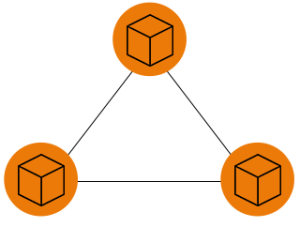Outline
Records, blocks, and articles are capacity arranges that hold, put together, and present information in various ways — each with their own abilities and limits. Record capacity sorts out and addresses information as an order of documents in envelopes; block capacity lumps information into randomly coordinated, equally estimated volumes; and item stockpiling oversees information and connections it to related metadata.
Compartments are exceptionally adaptable and carry unimaginable scale to how applications and capacity are conveyed.
File Storage

Record storageFile stockpiling, additionally called document level or record based capacity, is precisely exact thing you figure it very well may be: Data is put away as a solitary snippet of data inside an envelope, very much like you’d sort out bits of paper inside a manila organizer. At the point when you want to get to that piece of information, your PC has to know the way to track down it. (Be careful — It can be a long, winding way.) Data put away in documents is coordinated and recovered utilizing a restricted measure of metadata that tells the PC precisely where the actual record is kept. It resembles a library card inventory for information records.
Consider a storeroom loaded with file organizers. Each archive is organized in a coherent order of some sort — by bureau, by cabinet, by envelope, then, at that point, by piece of paper. This is where the term progressive capacity comes from, and this is record capacity. It is the most seasoned and most broadly involved information capacity framework for direct and arrange connected capacity frameworks, and one you’ve likely been utilizing for quite a long time. Any time you access records saved in documents on your PC, you use document capacity. Record capacity has wide abilities and can store pretty much anything. It’s perfect for putting away a variety of mind boggling documents and is genuinely quick for clients to explore.
The issue is, very much like with your file organizer, that virtual cabinet can open up until this point. Document based capacity frameworks should scale out by adding more frameworks, as opposed to increase by adding greater limit.
Block Storage

Block storage slashes information into blocks — get it? — and stores them as discrete pieces. Each block of information is given an exceptional identifier, which permits a capacity framework to put the more modest bits of information any place is generally helpful. That implies that a few information can be put away in a Linux® climate and some can be put away in a Windows unit.
Block storage is frequently designed to decouple the information from the client’s current circumstance and spread it across numerous conditions that can more readily serve the information. And afterward, when information is mentioned, the basic stockpiling programming reassembles the blocks of information from these conditions and presents them back to the client. It is normally sent away region organization (SAN) conditions and should be attached to a working server.
Since block storage doesn’t depend on a solitary way to information — like record stockpiling does — it tends to be recovered rapidly. Each block lives all alone and can be divided so it tends to be gotten to in an alternate working framework, which gives the client complete opportunity to design their information. It’s a productive and dependable method for putting away information and is not difficult to utilize and make due. It functions admirably with undertakings performing enormous exchanges and those that convey tremendous information bases, meaning the more information you really want to store, the good you’ll accompany block capacity.
However, there are a few disadvantages. Block capacity can be costly. It has restricted capacity to deal with metadata, and that implies it should be managed in the application or data set level — adding something else for a designer or frameworks director to stress over.
Object Storage

Object storage, otherwise called object-based capacity, is a level construction wherein records are broken into pieces and spread out among equipment. In object capacity, the information is broken into discrete units called protests and is kept in a solitary storehouse, rather than being kept as records in envelopes or as blocks on servers.
Object storage volumes fill in as secluded units: each is an independent store that claims the information, an exceptional identifier that permits the item to be tracked down over a disseminated framework, and the metadata that portrays the information. That metadata is significant and incorporates subtleties like age, protective measures/protections, and access possibilities. Object capacity metadata can likewise be very nitty gritty, and is equipped for putting away data on where a video was shot, what camera was utilized, and what entertainers are highlighted in each edge. To recover the information, the capacity working framework utilizes the metadata and identifiers, which conveys the heap better and allows heads to apply arrangements that perform more hearty inquiries.
Object storage requires a straightforward HTTP application programming connection point (API), which is involved by most clients in all dialects. Object capacity is cost effective: you just compensation for what you use. It can scale effectively, pursuing it an incredible decision for public distributed storage. It’s a stockpiling framework appropriate for static information, and its deftness and level nature implies it can scale to very huge amounts of information. The items have sufficient data for an application to find the information rapidly and are great at putting away unstructured information.
There are downsides, certainly. Objects can’t be adjusted — you need to compose the article totally on the double. Object capacity likewise doesn’t function admirably with conventional information bases, since composing objects is a sluggish interaction and composing an application to utilize an item stockpiling API isn’t generally so straightforward as utilizing document capacity.
